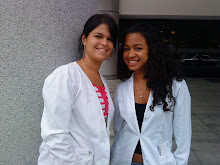
90. Spleen: is an organ parenchymal type, oblong and flat, situated in the upper left of the abdominal cavity, in contact with the pancreas, diaphragm and left kidney. Its main function is the destruction of old red blood cells, produce some new and maintain a pool of blood. It is part of the lymphatic system and is the center of activity of the immune system. (Bazo)
91. Syrup: concentrated solution in water that may have no substance, can also have a vehicle to get a viscous demulcente action. (Jarabe)

92. Tablets: records obtained by compression. Excipients used for oral use and some have a slot in case of splitting the dose. (Tabletas)

93. Tachycardia: is an increase in heart rate. Tachycardia is considered a heart rate exceeding 100 bpm (beats per minute) at rest. It is physiological during sports. (Taquicardia)
94. Thermometer : is an instrument for measuring temperature. Since its invention has evolved greatly, especially since it was started to manufacture digital electronic thermometers. (Termómetro)

95. Thorax: The thorax is the part of the human body that is between the base of the neck and the diaphragm. Contains the lungs, heart, major blood vessels and aortic (ascending, arch and descending), the inferior vena cava, the sympathetic ganglion chain where they exit from the splanchnic, the major and minor azygous vein, the esophagus , thoracic duct and its division is the mediastinum. (Tórax)

96. Vaccine :(from the Latin vaccinus-a-um, 'cattle'; of Vacca-ae, 'cow') is a preparation of antigens that once inside the body causes an attack, called antibody. This response generates immunological memory resulting, in most cases, permanent immunity against disease. (Vacuna)

97. Vein: is a blood vessel that conducts blood from the capillaries to the heart and leads, typically, carbon dioxide and waste from the agencies, although there are veins that carry oxygenated blood. (Vena)
98. Ventricle: relation to each of the lower chambers of the heart ventricles receive blood from the upper chambers of the same side of the heart, the atria. Each ventricle contracts during systole, the period of the cardiac cycle in which the heart pumps blood to the lungs and the rest of the body. (Ventriculo)

99. Virus: (from the Latin word virus, toxin or poison) is a biological need for replication of a host cell. Lack of independent living but can replicate inside living cells, often damaging to the host in this process. The hundreds of known viruses cause many different diseases in humans, animals, bacteria and plants. (Virus)

100. White: they are a heterogeneous group of cells that are effectors of the cellular immune response and are involved in defending the body against infectious agents or foreign substances (antigens). Originate in the bone marrow and lymph tissue. (Globulos Blancos)


No hay comentarios:
Publicar un comentario